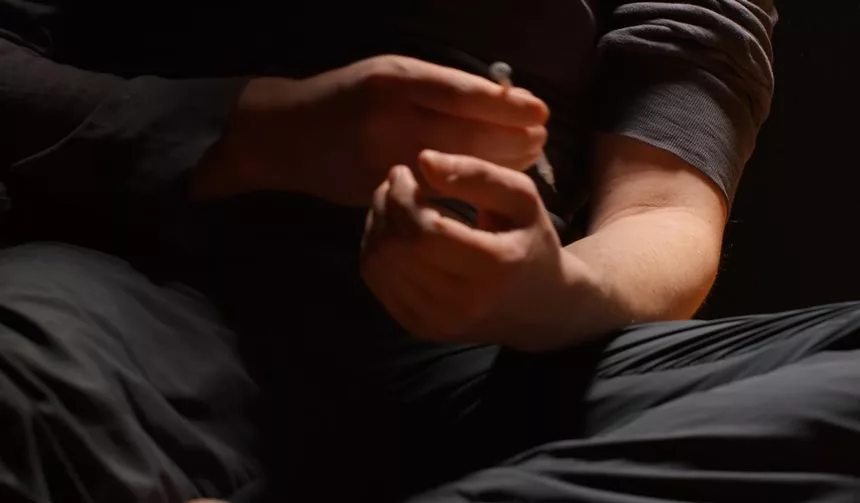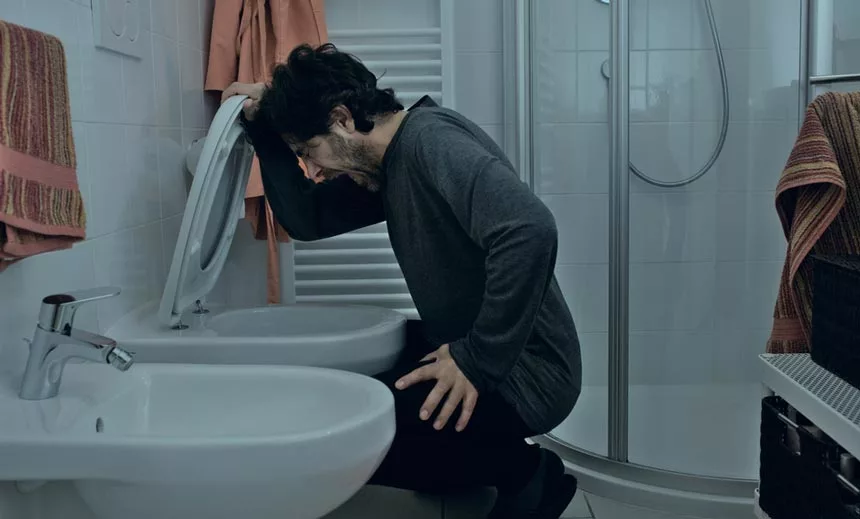What is Sublocade?
Table of Contents
- What is Sublocade?
- How is Sublocade Used?
- Is Sublocade Addictive?
- The Spread of Opioid Addiction in the US
- The Risks of Abusing Sublocade
- The Signs and Symptoms of Sublocade Overdose
- Recognizing the Signs of an Opioid Use Disorder
- Sublocade Withdrawal Symptoms
- Sublocade Addiction Treatment Services
- Medical Detox for Opioid Addiction
- Inpatient vs Outpatient Treatment for Opioids
- Behavioral Therapies Used to Treat Addiction
- Ongoing Care and Recovery Support Services
- Find a Complete Treatment Program for Sublocade Today!
- FAQs About Sublocade
- Medically Reviewed By
Sublocade is a medication used to treat opioid use disorder (OUD). Sublocade is an extended-release form of buprenorphine, a medication used to treat opioid addiction. It is administered as a once-monthly injection, which can help reduce cravings and withdrawal symptoms associated with opioid addiction.
Sublocade is a form of medication-assisted treatment (MAT), which combines medications with counseling and behavioral therapies to treat opioid dependence. Sublocade works by binding to the same opioid receptors in the brain as other opiate drugs.
Ultimately, this medication is used to help people who are addicted to opioid pain medications and other drugs to stay in treatment and on track to recovery. However, there are some risks to using this drug to be aware of, especially if you have a history of abuse with other opioid medicines.
Keep reading to learn more about Sublocade treatment for a moderate to severe OUD, and how you can recognize the signs of addiction and get the help you need to achieve sobriety today with Find Addiction Rehabs.
How is Sublocade Used?
Sublocade is a new type of medication that is used to treat opioid addiction. It is a once-monthly injection administered under the skin (subcutaneous) which contains buprenorphine, an opioid agonist-antagonist.
As Sublocade can be administered intravenously and less frequently than Suboxone, it has begun to be viewed as a better alternative to certain medicines. For example, it has become a popular alternative to typical transmucosal (under the tongue) buprenorphine doses, an opioid medicine commonly used for treating opioid dependence. Find out more about Suboxone vs Sublocade in our dedicated resource.
Sublocade is used as part of a comprehensive treatment plan for individuals who are dependent on opioids. Sublocade acts by providing a steady, low-level dose of buprenorphine extended-release into the bloodstream, which helps to reduce cravings and opioid withdrawal symptoms.
Getting a regular Sublocade injection can help to support individuals in their recovery and reduce the risk of relapse. It also helps to lower their risk of accidental overdose, as too high a dose of buprenorphine can be potentially fatal.
Sublocade is typically used in combination with counseling and other supportive therapies to help individuals achieve full recovery. This includes psychotherapy and support groups, as well as lifestyle changes such as healthy eating and regular exercise.
Sublocade is also used to help individuals reduce their tolerance to opioids so that if they relapse and take opioids, it is less likely to be fatal. However, with the many benefits that come with taking Sublocade, so too are there potential downfalls to be looked out for.
Is Sublocade Addictive?
Sublocade does not cause physical dependence like other opioids do. Sublocade does not cause a high, and, when used as prescribed, it does not lead to withdrawal symptoms when the medication is stopped. However, Sublocade can be psychologically addictive.
This means that individuals may become dependent on the medication to feel normal. For example, if someone has been taking Sublocade for a long time, they may become reliant upon it to reduce their cravings, or to manage their withdrawal symptoms.
While this subcutaneous injection should only take place once a month, it is possible to obtain this drug illegally so that it can be abused. This could lead to an individual taking more Sublocade than they need, or taking it beyond the recommended dosage.
The Spread of Opioid Addiction in the US
Opioid addiction in America is on the rise and is becoming a major public health crisis. The cause of the spread of opioid addiction in America is multi-faceted, but some of the main factors contributing to this crisis are prescription opioid misuse, illicit opioid use, and the availability of opioids.
Prescription opioid misuse is a major factor in the spread of opioid addiction in America. Prescription opioids are highly addictive and easy to obtain, and many people start using them for recreational or medical purposes.
Unfortunately, this often leads to opioid dependence and addiction. The Centers for Disease Control and Prevention (CDC) estimates that more than 2 million Americans have an opioid use disorder related to prescription opioid misuse.
Illicit opioid use is another factor contributing to the spread of opioid addiction in America. Illicit opioids such as heroin, fentanyl, and other synthetic opioids are increasingly available on the street, and many people turn to these drugs as a cheaper and more accessible alternative to prescription opioids.
The availability of opioids is also a major factor in the spread of opioid addiction in America. Opioids are widely available in both prescription and illicit forms, making them easy to obtain. This, combined with the fact that opioids are highly addictive, has made them a popular choice for those looking to escape their problems or simply get high.
The spread of opioid addiction in America is a major public health crisis that needs to be addressed. The most effective way to do this is to reduce the availability of opioids and increase access to effective addiction treatment.
The Risks of Abusing Sublocade
Sublocade is a powerful drug and should only be used with a doctor’s supervision. While Sublocade is effective in treating opioid use disorder, it also carries some risks if abused. It is important to ask your doctor about the warnings Sublocade may have before taking this medication.
Short-Term Effects
The primary risk of abusing Sublocade is an overdose. Sublocade is an opioid agonist, meaning it activates opioid receptors in the brain, providing similar effects as other opioids such as heroin or oxycodone.
Like other opioids, Sublocade can cause severe drowsiness and respiratory depression, which can lead to death if an overdose occurs. If you suspect that you or someone else may be experiencing a Sublocade overdose, it is important to seek emergency medical attention immediately.
There is also a risk of poor injection site reactions, as well as the possibility of having an allergic reaction to the drug. This may be characterized by severe dizziness, shortness of breath, and itching, amongst other symptoms. Allergic reactions can cause serious harm if left unattended, so it is important to seek emergency medical help as soon as possible.
Long-Term Effects
Sublocade affects users in many ways, and long-term use of this drug can have a number of adverse side effects. This is why it is so important to speak with a certified healthcare provider before taking this medication and only use it as prescribed.
One risk of abusing Sublocade is an increased risk of HIV and hepatitis C infection. When Sublocade is injected, it is typically done with a needle and syringe. If these needles are shared and reused, it increases the risk of transmitting blood-borne viruses.
Kidney disease and liver problems, such as impaired liver function, have also been found to be possible side effects of long-term addiction treatment with Sublocade.
Using Sublocade without a doctor’s supervision also increases the risk of misusing other substances. In some cases, Sublocade is combined with other substances, such as alcohol or other opioids, which further increases the risk of overdose and other adverse health effects.
The Signs and Symptoms of Sublocade Overdose
According to the U.S. Department of Health and Human Services (HHS), an estimated 115 Americans die every day from an opioid overdose. With these numbers in mind, knowing how to recognize the signs of overdose can be life-saving.
An overdose of Sublocade can have serious and potentially fatal consequences. When someone takes too much Sublocade, they may experience a range of overdose symptoms, including:
- Nausea and vomiting
- Drowsiness and confusion
- Slow breathing or difficulty breathing
- Muscle weakness or limp body
- Low blood pressure and decreased heart rate
- Loss of consciousness
- Seizures
- Coma
If you or someone you know is experiencing any of these symptoms, it’s important to seek medical attention immediately. An overdose of Sublocade can be fatal, so it’s important to seek emergency treatment right away.
Recognizing the Signs of an Opioid Use Disorder
Overdose deaths from opioids continue to increase, and it is important for people to recognize the signs of an opioid use disorder so that they can get help if needed. The signs of an opioid use disorder can vary from person to person, but there are some common red flags that may indicate a problem.
One of the most obvious signs is an increase in tolerance, which is when a person needs to use more and more of the drug to feel the same effects. If a person is taking opioids for pain relief, they may find themselves needing to take larger doses to get the same relief.
Other signs of an opioid use disorder include changes in behavior and mood. People may become more socially withdrawn, have a decrease in energy, lack motivation, and become depressed or anxious. They may also have difficulty sleeping and a lack of appetite.
Signs of an opioid use disorder will also manifest in physical symptoms. People taking opioids may experience nausea, vomiting, constipation, itching, and a decrease in their sex drive. They may also have a hard time focusing and paying attention.
If a person is displaying any of these signs, it is important to seek help. Addiction is a progressive disease, and the longer it is left untreated, the worse it can get. The Find Addiction Rehabs hotline is available 24/7 to help you find the treatment you need.
Sublocade Withdrawal Symptoms
As with any medication, Sublocade can cause side effects, and in some cases, it can also lead to withdrawal symptoms. Sublocade withdrawal symptoms can range from mild to severe, depending on the individual and the length of time they have been taking the medication.
Symptoms may include nausea, vomiting, diarrhea, headache, insomnia, anxiety, depression, agitation, sweating, muscle aches, fatigue, and cravings for opioids. In some cases, people may experience more severe withdrawal symptoms such as hallucinations, delirium, seizures, and even coma.
If you are taking Sublocade and experiencing withdrawal symptoms, it is important to seek medical help. Your doctor can help you determine the best course of action to manage your withdrawal symptoms and ensure your safety.
The best way to prevent withdrawal symptoms is to follow your doctor’s instructions for taking Sublocade. This includes taking the medication as prescribed, not increasing your dose without your doctor’s approval, and not stopping the medication suddenly.
If you do need to stop taking Sublocade, it is important to tell your doctor before doing so on your own. They may suggest seeking professional help and tapering off the medication gradually to minimize the risk of withdrawal symptoms.
Sublocade Addiction Treatment Services
Opioid addiction is a serious and growing problem in the United States, but there are a variety of effective treatments available. If you or someone you know is struggling with opioid addiction, it is important to get help as soon as possible.
Treatment can help individuals overcome their substance abuse in a healthy and effective manner. Treatment will generally start with an evaluation process, which can help provide the provider with a better understanding of their clients’ needs, This may include any co-occurring medical conditions that will need to be treated with their addiction.
It can be helpful to call compassionate addiction specialists, like the Find Addiction Rehabs team, to discover which treatment options will best suit your recovery needs.
Medical Detox for Opioid Addiction
The first step in the treatment process, for most people, is typically detoxification. This involves gradually reducing the amount of opioid in the body until it is no longer present. Detoxification can be done in an inpatient or outpatient setting and involves both medical and psychological support.
It is important to note that detoxification alone is not enough to treat opioid addiction. You may already be familiar with this if you feel addicted to Suboxone and want to come off opioids entirely. This level of care is meant to help set a solid foundation for further treatment, allowing you or your loved one to successfully achieve long-lasting sobriety with additional support.
Inpatient vs Outpatient Treatment for Opioids
When it comes to treatment for opioid addiction, there are two main options: inpatient and outpatient. Each type of treatment has its own advantages and disadvantages, so it’s important to consider carefully which one is right for you or your loved one.
The Benefits of Inpatient Treatment
Inpatient treatment is a 24-hour supervised program in which the patient resides in a facility. This type of treatment is typically used for more severe cases of opioid addiction and can last anywhere from a few days to a few months, depending on the individual’s needs.
Inpatient treatment typically includes a combination of medical and mental health assessments, individual and group therapy, and medication-assisted treatment. The main advantage of inpatient treatment is the level of support and supervision the patient receives while in the program.
Patients have access to medical and mental health care around the clock and often receive other services such as vocational counseling and recreational activities. The downside is that inpatient treatment can be costly and time-consuming, and it may not be the best option for those with work or family obligations.
However, it may provide more support to those struggling with a co-occurring mental health or medical condition that can complicate their recovery process. Ultimately, inpatient treatment options are best suited to those with more severe addictions or who otherwise require more extensive care.
The Benefits of Outpatient Treatment
Outpatient treatment, on the other hand, is a less intensive form of treatment that allows the patient to continue living at home while receiving treatment, either through your doctor’s office or another rehabilitation center.
This type of treatment typically involves visits with a counselor or therapist for individual or group therapy and medication-assisted treatment. Outpatient treatment can be more flexible and affordable than inpatient treatment, and it can be tailored to your individual needs and schedule.
The main advantage of outpatient treatment is that it allows the patient to continue living their life while receiving treatment. Individuals are able to maintain their normal routines, including work and family obligations, while still getting the help they need.
The downside is that this treatment will not be as intensive or structured as you may need to achieve lasting sobriety. Speaking with the Find Addiction Rehabs team can help you understand all of your treatment options, and which of these will be best suited to your recovery needs.
Behavioral Therapies Used to Treat Addiction
In many cases of addiction treatment, certain therapeutic interventions will be used to help individuals understand and address the underlying causes of their addictive behaviors. This may include individual or group counseling, cognitive-behavioral therapy, and/or family therapy.
Once you are able to identify and effectively handle the underlying causes of your addiction, these therapies can help you to develop skills to manage cravings and triggers. These coping mechanisms will be crucial for your ability to maintain long-term independent sobriety.
Ongoing Care and Recovery Support Services
Once these initial stages of treatment have been completed, many people will move on to long-term recovery and relapse prevention programs. This may involve participation in self-help groups, such as Narcotics Anonymous, and other ongoing counseling and support services.
It is important to remember that relapse is a common part of the recovery process and that it does not mean that you have failed. The psychosocial support provided through ongoing care can help to prevent relapse and facilitate long-term recovery.
Find a Complete Treatment Program for Sublocade Today!
While Sublocade can be an effective treatment option for opioid addiction, this medication does not come without its risks. If you or a loved one is struggling with Sublocade abuse, the Find Addiction Rehabs team can help.
We work with an extensive network of rehab facilities that value long-term treatment success and are capable of addressing a variety of addiction issues.
Call our 24/7 hotline now, and we will connect you with a treatment center that can address all of your care needs and get you started on the path to recovery, today!
FAQs About Sublocade
Can Sublocade Be Taken Daily?
Sublocade is approved by the FDA to be taken once a month and is considered a long-term treatment option for OUD. This means that it is not recommended to take this medication daily, despite its many rewarding effects, as this can increase a person’s risk of experiencing adverse side effects.
What is a Normal Dose of Sublocade?
The normal dose of Sublocade for opioid addiction is 300 mg once a month. This dose is based on the patient’s needs and the severity of their opioid addiction. Those using this medication may need to adjust their dose depending on their response to treatment.
Can I Drink Alcohol While Taking Sublocade?
The short answer to this question is no. Drinking alcohol or using other depressants while taking Sublocade can be dangerous and can increase the risk of serious side effects. Sublocade is an opioid agonist, meaning that it can bind to the same receptors in the brain as opioids, such as heroin.
When combined with alcohol, it can cause an unpredictable reaction that can lead to serious side effects, such as drowsiness, confusion, nausea, and vomiting. The body processes Sublocade and alcohol differently, which can lead to an increase in the amount of Sublocade in the bloodstream.
This can cause a person to experience more intense opioid effects and negative drug interactions and can even lead to an overdose. Additionally, drinking alcohol can affect Sublocade absorption, making it difficult to achieve the desired results.
For all these reasons, it is best to avoid drinking alcohol while taking Sublocade. If you do choose to drink, it is important to be aware of the risks and talk to your doctor beforehand.
How Much Sublocade is Too Much?
The recommended dosage of Sublocade is 300 mg per injection, which should be administered every four weeks. However, due to the strength of the medication, it is important to be aware of the potential risks of taking too much Sublocade.
Taking more than the recommended dose can lead to serious side effects, including drowsiness, dizziness, nausea, vomiting, and constipation. It is important to be aware of your own body and the signs and symptoms of an opioid overdose.
If you think you may have taken too much Sublocade, it is important to seek medical help immediately. An overdose of Sublocade can be dangerous and potentially life-threatening.
Deborah Tayloe is a freelance writer specializing in health and sciences. Deborah earned a B.S.Ed. in Secondary Education/English, accompanied by a Spanish minor. Her writing expertise allows her to craft engaging, impactful articles to help people be well.
In addition, she holds a fully accredited Certificate of Natural Medicine and is a certified Herbalist. Through her understanding of complementary medicine, Deborah helps medical professionals give people the information they need to embrace natural approaches to wellness.
When she’s not working, Deborah trains for 5K races and advocates for animal rights.








